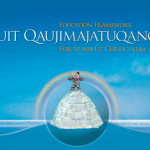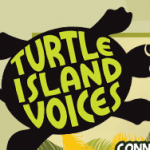The first part of this documents title is: Aboriginal Worldviews and Perspectives in the Classroom, with the subtitle, as above, Moving Forward.
The rationale behind including this piece to my project/portfolio/whatever it is becoming, is that it outlines and details key work that has taken place in BC toward facilitating change in education. Perhaps the most important thing to keep in mind is that this is an online government document . . . mediating aboriginal education.


